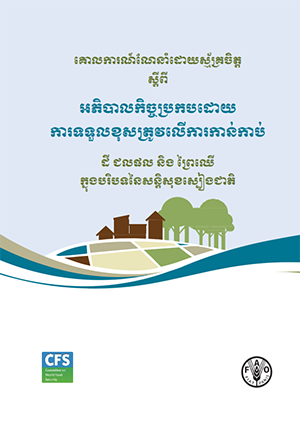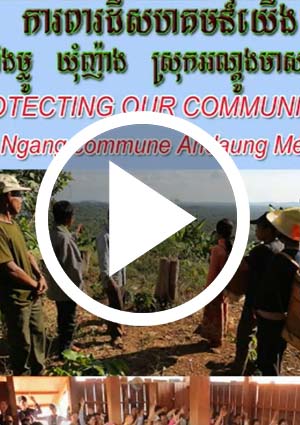FAO published its Voluntary Guidelines on the Responsible Governance of Tenure (VGGT) of Land, Fisheries and Forests in the Context of National Food Security in 2012. The purpose of these guidelines is to serve as reference and to provide guidance to improve the governance of tenure of land,…
This video is part of one of the major activities of the L&A initiative “Collective Learning on Land Conflict Resolution” in Cambodia. It shows how successfully the participatory resolution of land conflict by the villagers in Sre Chhuk village in Lumphat district has been managed.
…This video is part of one of the major activities of the L&A initiative “Collective Learning on Land Conflict Resolution” in Cambodia. It shows how important the solidarity of villagers is important to prevent land grabbing. The concerned village is in Taing Mlou village, Andoung Meas…
80% of Cambodian people are farmers living in rural and remote areas. They are depending on agriculture, livestock and natural resource extraction to feed their families. Nearly last two decades, the royal government of Cambodia has tried its effort develop legal framework, infrastructure and…
The National Environment Strategy and Action Plan (NESAP) 2016-2023 is developed in accordance with the the Constitution and 1996 Law on Environmental Protection and Natural Resource Management. It is aligned to Rectangular Strategy Phase III (RSIII), that reaffirms the RGC’s mission and…
This report reveals new links between Australia's big four banks and three land grabbing case studies previously documented in Oxfam's 2014 report Banking on Shaky Ground. The new report also provides evidence that, even after Oxfam first alerted the banks to their exposure to land…
ABSTRACTED FROM EXECUTIVE SUMMARY: In the last decade it has become widely accepted that insecurity of land tenure has a unique impact on women, particularly in the global South where, more often than not, women are the primary caregivers in a household. In Cambodia, where land conflict…
An analysis paper by Future Directions International on livelihood considerations and food security in the Lower Mekong countries, published in May 2016.
WEBSITE INTRODUCTION: Across the Mekong region, ‘development’ has become synonymous with rapid economic growth, to be achieved through predominantly large-scale, private investments. The development model promoted by the region’s governments prioritizes trade and investment liberalization, and…
The objective of this background paper is to provide a succinct description of the land tenure situation in Cambodia and, on that basis, discuss the needs smallholder farmers have for land, projected up to the year 2030. The main problem it examines lies at the intersection between, on one hand…
An analysis paper by Dustin Hoasa on the World Bank Group's lending practices, part 2 in Inclusive Development International (IDI)'s 'Outsourcing Development' series. Published by IDI in collaboration with the Bank Information Center, 11.11.11, Urgewald and Accountability…
A comparative study of land rights systems in Southeast Asia and the potential of national and international legal frameworks and guidelines.








